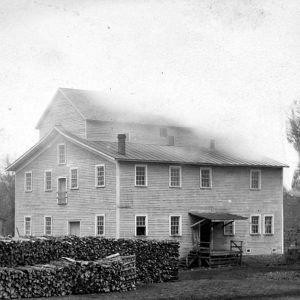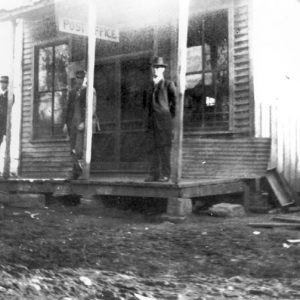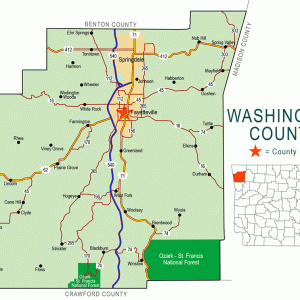calsfoundation@cals.org
Farmington (Washington County)
| Latitude and Longitude: | 36º02’31″N 094º14’49″W |
| Elevation: | 1,200 feet |
| Area: | 9.83 square miles (2020 Census) |
| Population: | 7,584 (2020 Census) |
| Incorporation Date: | October 15, 1946 |
Historical Population as per the U.S. Census:
|
1810 |
1820 |
1830 |
1840 |
1850 |
1860 |
1870 |
1880 |
1890 |
1900 |
|
– |
– |
– |
– |
– |
– |
– |
– |
– |
– |
|
1910 |
1920 |
1930 |
1940 |
1950 |
1960 |
1970 |
1980 |
1990 |
2000 |
|
– |
– |
– |
– |
– |
216 |
908 |
1,283 |
1,322 |
3,605 |
|
2010 |
2020 |
|
|
|
|
|
|
|
|
|
5,974 |
7,584 |
|
|
|
|
|
|
|
|
For more than a century, Farmington, one of the early settlements in northwest Arkansas, was a small village five miles west of Fayetteville (Washington County). The rapid growth of this section of the state has affected the area in and around Farmington profoundly. In 1940, its population was about 200, but as of the 2010 census, 5,974 people resided there. This population expansion mirrors the phenomenal growth of northwest Arkansas in recent years.
Territorial Period to Early Statehood
In 1828, settlers arrived early in the wide valley that flows west from Fayetteville, and it was truly frontier country. The federal government moved the Cherokee and Osage tribes westward into what is now Oklahoma. They took their wars along with them, leaving the country open for settlement. The early pioneers began arriving shortly after this time and carved their homesteads out of the wilderness and the land left by the Indians forced westward.
In 1833, five families met to form a Methodist church, which they called “Our Ebineezer.” They were Reverend Josiah and Sarah Trent, James and Jane Kinnibrugh, William and Matilda Woodruff, William and Elizabeth Polson, and Samuel and Matilda Woolsey. The little congregation soon outgrew its first tiny log church and moved to successively larger quarters. In 1892, a fine clapboard church was built, and it included a beautiful stained-glass window upon which was inscribed with the names of the founders. This building served for 105 years and is still in use today (though not by the Methodists). The Methodists now have a spacious new building on Highway 170 south of town. The stained-glass window was successfully moved to the new church. A two-story Masonic Hall was built near the 1892 church; the hall still holds lodge meetings. Other early settlers were the Shreve, Wilson, Allen, Cato, and Reed families. The second denomination to be established in Farmington was the Christian Church. The members were called the Cambellites after their founder, Alexander Campbell.
The first settlers bought land directly from the federal government, and some amassed sizable holdings. James Kinnibrugh was the largest landholder, and the city of Farmington now occupies much of the land he owned. Most of the early families in the valley came from states farther south and brought their culture and their slaves with them. They were not large slave holders, usually owning just a few house servants and farm hands.
In the 1850s, William Henry Engels built a small grist mill powered by mules, and the community became known as Engels Mill. In 1856, Engels married Isabella Kinnibrugh, and she was given a sizable acreage of family land upon her marriage. The couple built a large two-story house, which is still standing in Farmington.
Civil War through Reconstruction
When the Civil War began, life in the valley changed abruptly. Many northwest Arkansas residents were sympathetic to the Union, particularly the small holders in the hills, but the valley had more of a Southern culture. The two Kinnibrugh sons fought for the Confederacy, and one died in the war. Fayetteville, only five miles away, was occupied alternately by Confederate and Union troops.
The Battle of Prairie Grove took place on December 7, 1862, ten miles west of Engels Mill. After the battle, the Confederate army, unable to hold its ground, retreated south, leaving the Southern sympathizers unprotected. The Union occupation was harsh. The troops took all cattle, horses, poultry, and anything else they could find that was useful, leaving the people and their children hungry.
Trouble did not leave the valley with the end of the war. The people now had to deal with roving bands of jayhawkers, bushwhackers, and outlaw bands who lived on the border of Arkansas and the Cherokee Nation thirty miles to the west. If a posse from Washington County went after them, the outlaws would ride hard for the border. If the Cherokee Lighthorse Police chased them, they would re-cross into Arkansas.
After the war, William Henry Engels built a three-story wooden flour mill that was steam operated. It stood just north of the present Highway 62 bridge across Goose Creek. This mill ground grain steadily until it burned in 1935.
Engels envisioned a town growing along the road that went westward to Prairie Grove (Washington County) and Cane Hill (Washington County). It was all family land, so he had it surveyed and platted, and the first streets were named. Lots were sold for $25 each, and soon a village was growing. Engels named his town Farmington. A post office was established in 1868, and a small grocery store was opened by John Wilson Reed and his son, John Augustus. A large general store was built, probably by the same Mr. Conner, who later bought Engels’s mill. For many years, this general store was owned and operated by the McNeal family. This false-fronted building still stands as a furniture store. John Henry Cato moved to the new town from Cato Springs (Washington County) and established a wagon factory. Some years later, Cato built a stone distillery behind the mill beside the clear spring-fed stream. However, Engels, who was a staunch teetotaler, managed to get a law passed that permanently closed the distillery.
Gilded Age to Early Twentieth Century
About 1890, the St. Louis–San Francisco Railway (Frisco) was built through the valley to Prairie Grove and points west. This attracted Starks Brothers Nursery, one of the largest fruit tree growers in the nation. The Starks company bought a large portion of the old Kinnibrugh land from John Kinnibrugh, the surviving son of the original settlers, in 1902, and Farmington became a company town. The Starks company remained until after World War II. The pay was low and seasonal, but it allowed families to subsist during the Great Depression of the 1930s. Independent of Starks, there were a number of strawberry growers, and they had a strawberry association that handled the marketing. The berries were packed in a large packing shed beside the Frisco depot and shipped in refrigerated cars. There were also vineyards of Concorde grapes, most of which were sold to the Welch’s Grape Juice Company in Springdale (Washington County). Table grapes were sold directly from the vineyards.
World War II to Modern Era
The Frisco Railroad pulled up its tracks at the beginning of World War II, purportedly to use the metal for the war effort, but actually it was reported that the line was seeing little profit and that the company had wanted to do this for some time. The Starks later sold their land to Grif Wilson, a dealer in real estate.
The town was not incorporated until 1946, after which it grew rapidly. A large portion of the population of Farmington works in Fayetteville and Springdale, although a number of businesses and professional people call the town home. In 2004, a new city hall and fire station were built on west Main Street. A newly organized public library now occupies the old city hall on Rheas Mill Road. A new shopping district and many acres of housing development have sprung up on the old Kinnibrugh land and other farms surrounding it, and Farmington grows ever outward to meet the neighboring towns.
Education
After the founders of “Our Ebineezer” found a teacher for their children, classes were held in the little log church with its backless benches. More comfortable quarters were soon found. In 1891, a sturdy brick building was erected with three large rooms and a wide hallway. Walter Shreve was the first teacher and principal of the new school. This structure is now a part of the administration building for the Farmington School District. In 1924, a brick high school was constructed and had about 100 students after the district was consolidated. This building burned in the 1960s, but a larger one was already in use. In 2005, the student population in the Farmington School District was 1,960.
For additional information:
Engels-Kinnibrugh Family Papers. Special Collections, University of Arkansas Libraries, Fayetteville, Arkansas.
Goodspeed’s History of Washington County. Chicago: Goodspeed Publishing Company, 1884.
Ness, Deidre Steele and Janie Buchanan Steele. “A History of Farmington Schools.” Flashback 64 (Summer 2014): 78–96.
Jane Noble
Fayetteville, Arkansas
 Farmington Mill
Farmington Mill  Farmington Post Office
Farmington Post Office  Farmington Store
Farmington Store  Washington County Map
Washington County Map 



Comments
No comments on this entry yet.